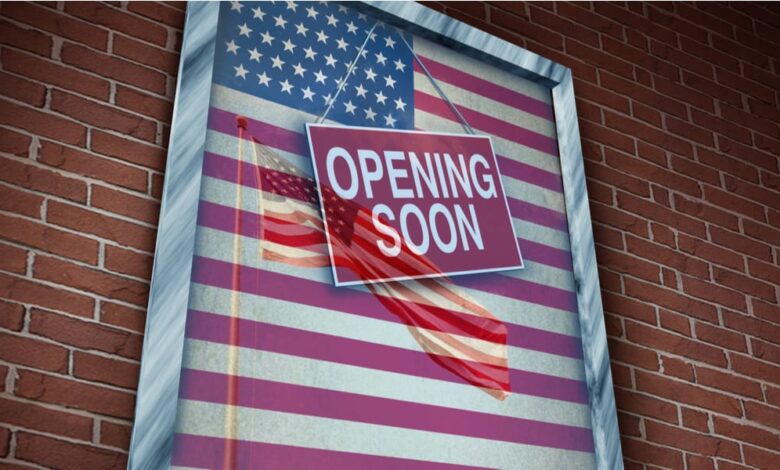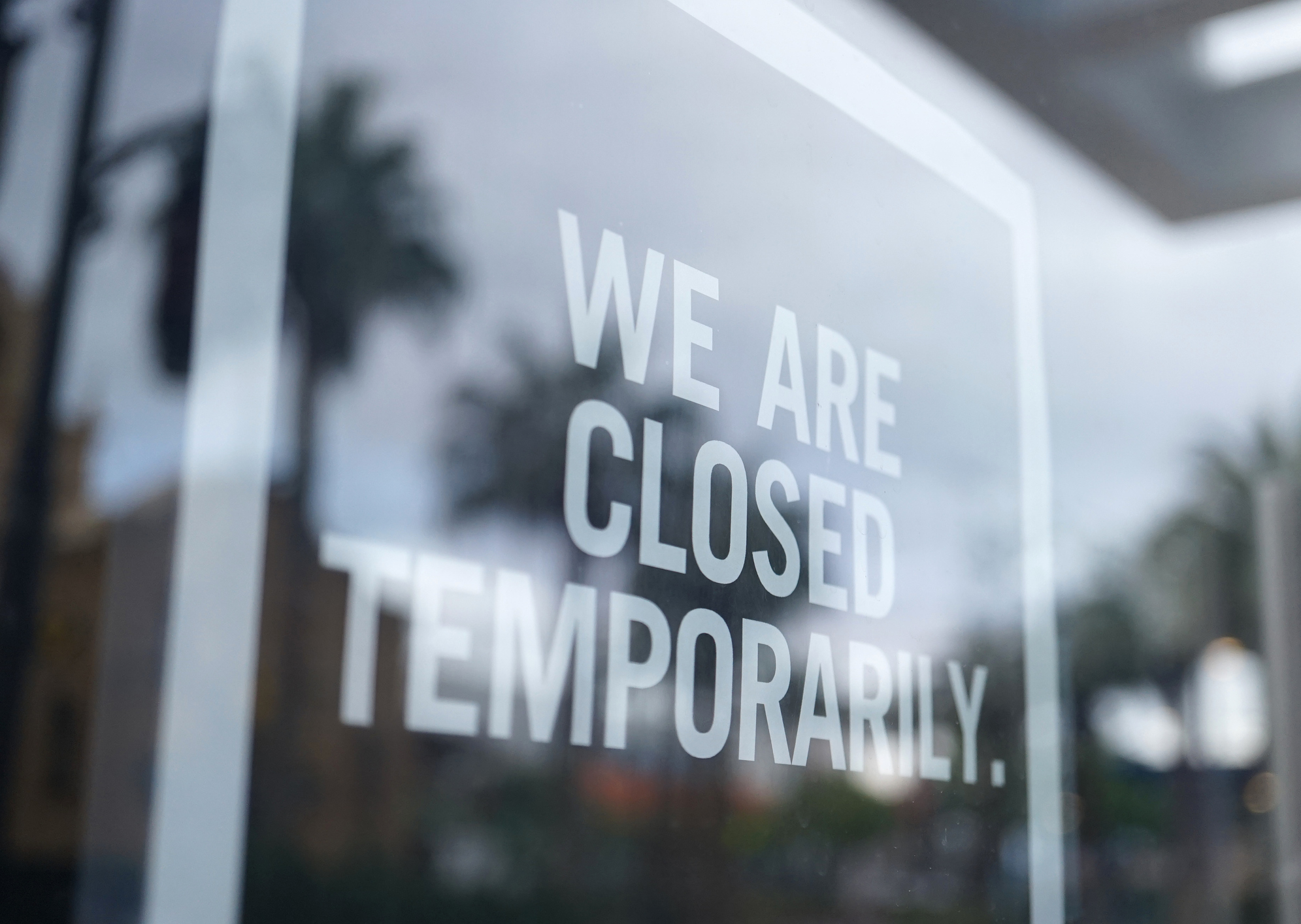Busy airports, widespread vaccination and increased consumption push the United States to pre-pandemic Reopening

In the United States, the transition to pre-pandemic norms is accelerating. With 2.2 million passengers, the New York City subway saw the busiest day since March 13, 2020, more than 1.7 million people passed through the country’s airports on Sunday, the highest number since the outbreak began. Early this week, on the reservation website OpenTable, seated diners at reopened restaurants hit 100% of 2019 levels.
According to Jay Varma, a surgeon and senior advisor to New York City Mayor Bill de Blasio, we’re absolutely moving to a moment when it’ll feel more like a routine than it will feel like the pandemic. As Covid-19 cases decrease, and the vaccine push moves to a more concentrated process, the constant progress—through mental illness—is made for many people in the U.S. Reports from the Federal Centers for Disease Control and Prevention claim that the 7-day average of newly confirmed cases has fallen below 40,000, the last record of September. The modelling used by the CDC suggests that over the next four weeks, the number of cases registered is expected to decline. Furthermore, the CDC reports show that more than 58% of people in the USA over the age of 18 received at least one dose of the Covid-19 vaccine. Children aged 12 to 15 are already registered for the Pfizer Inc. and BioNTech SE vaccine.
President Joe Biden proposed support for increased on-the-ground campaigns, including phone banking, door-to-door canvassing, and pop-up vaccination sites in offices and churches, as part of a revised federal goal to offer at least one injection of vaccine to 70% of people by July 4. States, counties, and healthcare providers have also begun experimenting with innovative methods to persuade patients to get the vaccine. Increased vaccines are helping to speed up the reopening process. Michigan reached a vaccine threshold of 55 per cent for those 16 and older on Monday, a milestone achieved by Democratic Gov. Gretchen Whitmer, who announced that all companies would be able to resume in-person work in the coming weeks following a two-week hiatus. State workers in New Hampshire who have been working from home due to Covid-19 have been ordered to return to work this week. Most capacity and other restrictions on businesses and public venues in Washington, D.C. will be lifted by May 21, with any remaining restrictions being lifted in June. Capacity restrictions in Illinois will be increased this month, with a full reopening planned for June. People who are completely vaccinated will easily continue most pre-pandemic practices alongside other fully vaccinated people, according to public health authorities and epidemiologists. In most areas, fully vaccinated people do not need to wear a mask or physically distance themselves, according to new CDC guidelines released on Thursday.
According to studies conducted by the Kaiser Family Foundation, 28 states have completely reopened. Both non-essential companies have reopened in 29 states, and there is no need for wearing a face mask in 22 of them. The majority of economic controls in New York, New Jersey, Minnesota, Delaware, Pennsylvania, and Rhode Island will be lifted this month. When about half of the population has received the first injection of vaccination, which is the case in New York City and elsewhere, the risk of the healthcare system being overburdened is reduced, as is the risk of mass mortality. As a result, we feel at ease loosening some of the controls we have on non-essential companies.
Jeffrey Shaman, an infectious disease modeller at Columbia University’s Mailman School of Public Health in New York, claims that the vaccine is doing its job. The virus will be steamrolled in the United States if there were fewer than 500 new infections every day, as has been the case in other countries. The wild card, he said, is variants of concern, especially those first found in India and Brazil. According to epidemiologist Michael Osterholm, director of the Center for Infectious Disease Research and Policy at the University of Minnesota, states will continue to experience flare-ups, with unexpected spikes of Covid-19 events that aren’t well understood.

Massachusetts, New Mexico, and Oregon, on the other hand, are taking a more cautious path to reopen. New Mexico Governor Michelle Lujan Grisham, a Democrat, has stated that the state will open after 60% of those registered have applied are fully vaccinated the state’s estimated unemployment rate is 48 per cent. Gov. Kate Brown, a Democrat from Oregon, said the state must do better to combat climate change. When 70% of residents aged 16 and up have received their first injection, the facility will reopen fully.
New York City officials had initially intended to reopen on July 1. New York Governor Andrew Cuomo and New Jersey Governor Phil Murphy, the Democrats, announced last week that on May 19, the two states will eliminate most business capacity constraints, including those in hotels, gyms, retail, offices, and theatres. Social distancing policies must be maintained, and no state’s mask mandate has been lifted. The decision effectively sped up the reopening of New York City by more than six weeks. Overall, the city’s businesses have been restricted for 14 months, dating back to mid-March 2020, when Covid-19 first ravaged the city, which was at the time the epicentre of the pandemic in the United States. Over a seven-day average, the number of people in the city who test positive for Covid-19 has dropped to less than 2%. The estimated daily number of confirmed cases is currently 693, and new cases have been slowly declining since the first week of April. Dr Varma said this downturn has surpassed our ambitious projections. Many cities are showing symptoms of reverting to existence prior to Covid-19. In more than a year, the San Francisco Symphony gave its first live performance. The Kansas City Symphony, based in Missouri, expects to return to its concert hall this month.
Normal, according to New York City restaurateur Gabriel Stulman, would be when waiters aren’t wearing masks, he will shake hands, and guests will sit at a bar and rub an elbow against a stranger, turn around, and start talking with that guy. Maintaining social distance in the city’s restaurants, including one of Mr. Stulman’s restaurants, which is 550 square feet, means that a full reopening this month is unlikely. Revenue remains below pre-pandemic peaks, he said, with variations depending on restaurant location and temperature.




